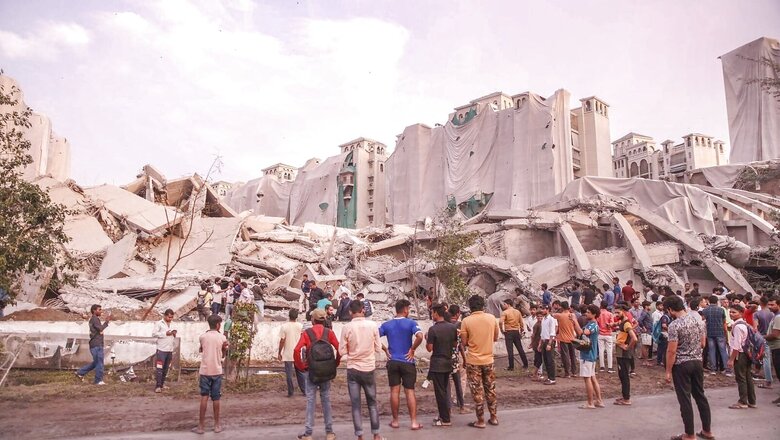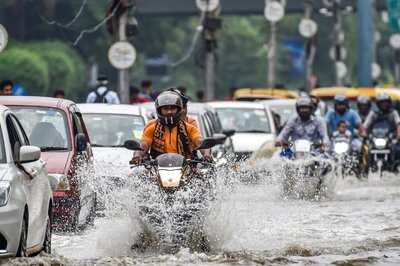
views
On August 28, 2022 at 2:30 pm, the much-talked-about Noida twin towers were demolished in a controlled fashion after informing the residents about the possible fallout and putting in place preventive measures. Many families were vacated from their apartments from the surrounding areas.
The effects of demolition on increasing the pollutants in the environment may not be realised immediately, and can take 1-2 weeks to manifest completely. Demolitions of high-rise structures in the past, as the twin towers of New York’s World Trade Center have shown, cause a huge spike in local concentration of particulate matter (PM 10-2.5) in the immediate neighbourhood. In many earlier studies, the long-term adverse effects on the air quality by such demolitions have been observed for up to 1-2 years after the demolition.
The elevated PM concentration poses many potential short-term and long-term health hazards. Particles from demolition sites are more likely to immediately cause upper airway symptoms. These include headache, eye and nose irritation, upper respiratory issues like sore throat, rhinitis, and nasal congestion. The vulnerable group include new-borns and children, pregnant women, elderly and those with pre-existing health conditions such as asthma, chronic bronchitis, diabetics, angina and cardiac diseases. There is a higher chance of exacerbations in the people suffering from interstitial lung disease, lung cancers, COPD and asthma, leading to increased hospital admissions in these people.
It has been estimated that an increase in ambient PM 10 is associated with an approximately 10-15 percent increase in emergency department visits for lung diseases. Coarse fraction of PM10-2.5 may reach the lower respiratory tract and can trigger long-term health effects that may be seen over many years. These include deterioration of lung functions due to COPD and asthma, pulmonary fibrosis, hypersensitivity pneumonitis and lung cancer. In addition to lung damage, there have been reports of skin cancers and deterioration of functions of heart and kidneys in the at-risk populations after demolition induced air pollution.
Effective preventive measures including water spraying and wind barriers are recommended; and, these were effectively followed by the local authorities before the demolition of NOIDA twin towers. There are certain precautions that the residents of the surrounding areas should take in the coming months, especially during the approaching winter season when the problem may worsen due to smog that happens every year in the NCR.
They should avoid intense physical activity outdoors particularly in morning and evening hours. They should preferably wear an N95 mask during peak hours of pollution and avoid opening of windows during peak hours of pollution. Smoking should be strictly avoided and a healthy balanced diet may be taken to counter the adverse effect of dust pollution. The residents may consult a pulmonologist, if they feel suffocation or respiratory symptoms, and get their lung functions checked regularly.
Dealing with the dust
– One must eat fresh fruits regularly. As fruits are rich in antioxidants, they help increase the body’s immunity and fight conditions like the common cold and allergies, etc.
– You should regularly drink water to keep yourself hydrated. In a dehydrated state, the body becomes weak. Also, dry skin may rupture, allowing germs, viruses and toxins to enter our body through skin cracks.
– If you get sinusitis, headache or head heaviness from exposure to the dust particles, you can take steam inhalation with eucalyptus oil or Vicks in boiling water twice a day.
– If you feel excessive breathlessness, then visit the nearest emergency centre or hospital for medical attention.
Dr Khanna is Head, Department of Respiratory medicine, Manipal Hospital, Dwarka, Delhi. The views expressed in this article are those of the author and do not represent the stand of this publication.
Read all the Latest Opinion News and Breaking News here


















Comments
0 comment